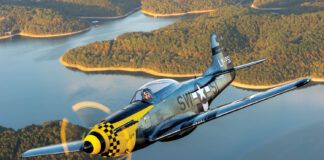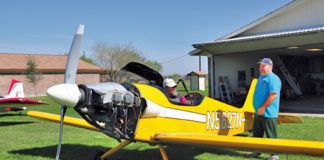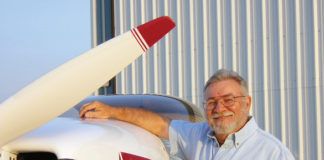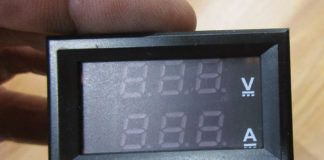
Shocking, Absolutely Shocking
![]() I was disappointed on many levels in your editorial Making electric aircraft exciting. I love KITPLANES for the diverse aircraft, and the unbiased descriptions of components and design options, but your editorial just hit me wrong. I can forgive the typo on rating the battery in KillaCycle by kilowatts/hour when the correct unit is kilowatts-hours. Its how many kilowatts you can produce for how many hours.
I was disappointed on many levels in your editorial Making electric aircraft exciting. I love KITPLANES for the diverse aircraft, and the unbiased descriptions of components and design options, but your editorial just hit me wrong. I can forgive the typo on rating the battery in KillaCycle by kilowatts/hour when the correct unit is kilowatts-hours. Its how many kilowatts you can produce for how many hours.
For a bigger technical error, you blithely passed on [KillaCycles] claim of 1 second to 60 mph and stated they achieved 3 G acceleration. One clue to the fallacy of this offhand remark is looking at the quarter-mile acceleration which is slightly above 1 G (back of the envelope). Getting 3 G to 60 mph would be premature acceleration. Of course, the blatant error is thinking any tire can achieve a coefficient of friction of 3. Sure, tires can get over a coefficient of 1 when they are hot, but when you start trying to lean over in a turn to get 1.5 to 2 G, just let us know where to send the flowers.
And please lose the self-indulgent indignation on slow drivers and snob remarks about Prius acceleration unless you want to talk real data. Low-and-slow is good enough in airplanes for lots of your readers, and when towing their planes to the field. Your editorial sense and respect for your readers should rein in your indignation a bit more. (Either that or I should go get a drink and lighten up.)
Norman Elfer
You have seen the KillaCycles rear tire, right? Its fat, sticky and purpose-built for straight-line racing. And its not meant to lean over.-Ed.
Thank you for echoing my sentiments about Prius drivers. I found it both accurate and amusing. One of the FBOs we frequent in our jet offers a Prius as its only pilot courtesy car. Our goal when driving this car is to see who can achieve the lowest mpg figure on the instant readout display. So far, I am the champ with around 7 mpg, achieved by briskly accelerating up a steep hill from a stop sign. I agree with you that the initial torque is surprisingly good. The discussion I enjoy having with Prius owners/fans is about the batteries. They are usually in complete denial, or ignorant. In reality, battery manufacturing and disposal at the end of a batterys service life are nasty, filthy processes, with very toxic products and byproducts. Also, emergency response personnel must receive specialized training to prevent getting a high-amp jolt through the heart when dealing with an accident in this type.
Keep up the good work!
Paul M. Starley
Hold the Ice
In the September Engine Beat column, Steve Ells says: Fuel-injection systems are always free of carburetor throat icing. I call that a dangerous almost truth. Fuel-injection systems have a throttle (butterfly valve), and they can have a small temperature drop with a partially closed throttle; they are highly resistant to icing, but they are not immune. The temperature drop at the throttle with FI should rarely exceed 2 C and never exceed 5 C; throttle icing with a FI system should only occur with temps around 0 to 2 C and very high relative humidity. Unfortunately, that describes a lot of winter mornings at my home airport in Paso Robles, California. For comparison, carb ice can occur at between -15 and 30 C, caused primarily by the heat of fuel vaporization. Throttle-body injection is more resistant to icing than a standard carburetor but less than intake-port injection.
Mike Perry
Economic Nosebleed
I am a modeler and builder of airplanes. After reading the September 2010 issue, I was very disappointed. I renamed your magazine Sport Plane Spender. With the hundreds of Experimental/Amateur-Built [aircraft], and Light Sport Aircraft (both ELSA and SLSA) on the market, you should be giving us detailed building, flying pictures, sketches and information, all of which is readily available, both from the manufacturer and, more importantly, from the actual builders.
Gilbert Grau
Gilbert, where have you been? We assume you’re reacting to the cover story on the Lancair Evolution Piston with Lycomings new IE2 engine-control system. We don’t like it any more than you do that it takes bags of money to create a high-technology, high-performance airplane. But it does. If Lancair and Lycoming could figure out how to do it for less, they would. Whats more, did you see the rest of the issue? We had a flight report on the M Squared Breese 2, a $35,000 airplane. We also had a comprehensive survey of electronic flight instruments, which are dramatically less expensive for Experimentals than they are for certified aircraft. Finally, no one does hands-on and builder-feedback coverage as well or as frequently as we do. Period.-Ed.













